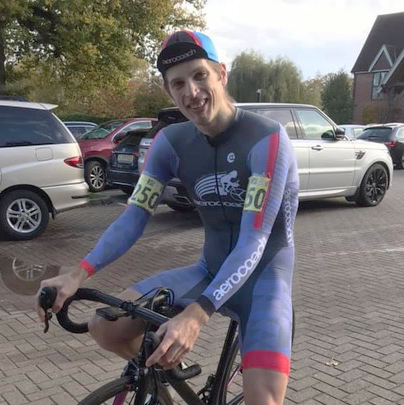With ever smaller gaps between the overall contenders in the mountains, time trials are often the place where crucial seconds are won and lost in stage races.
To see how significant a Tour de France time trial can be, we need only look back at last year’s decisive stage, when Tadej Pogačar tore up the script and overturned a 57-second deficit to snatch the yellow jersey from Primož Roglič.
With two time trials in this year’s race, amounting to 58km against the clock, the race of truth will play a significant role in the outcome of the 2021 Tour de France.
Ahead of the first test on stage five, we asked aerodynamics expert and performance consultant, Dr Xavier Disley, to analyse the course, tech and riders likely to perform on the day.
Who does the parcours suit? How much difference does bike tech, body position and kit actually make? Who are the riders to watch? Let’s find out…
Two time trials for the 2021 Tour de France
Stage five of the 2021 Tour de France is a 27.2km individual time trial around the town of Laval, just west of the famous motor circuit of Le Mans.
This is the shorter of the two time trials in the race, the other being stage 20 at 30.8km. Stage five isn’t particularly hilly but features enough climbing and some technical sections to test both the time trial specialists and GC (General Classification) riders alike.
Unlike some of the more dramatic, mountainous TTs that have been used in stage racing this year – particularly the Iztulia Basque Country and Tour de Suisse – stage five involves gradients of less than seven per cent.
However, there’s enough of them in the first half of the race to trick the riders into going too hard too early on, and starting the inevitable decline once too much time has been spent in the red zone.
The situation
At the time of writing, after an incident-packed opening to the Tour, the race leader is Mathieu Van Der Poel, with Julian Alaphilippe second at eight seconds, Richard Carapaz in third at 31 seconds, along with Wout Van Aert.
It’s been a chaotic start to the Tour, with significant time gaps already – Geraint Thomas and Primož Roglič have both lost more than a minute – but the first time trial should result in a big shake up in the top 30 on current GC, with the potential for minutes to be won or lost given the length and difficulty of the stage.
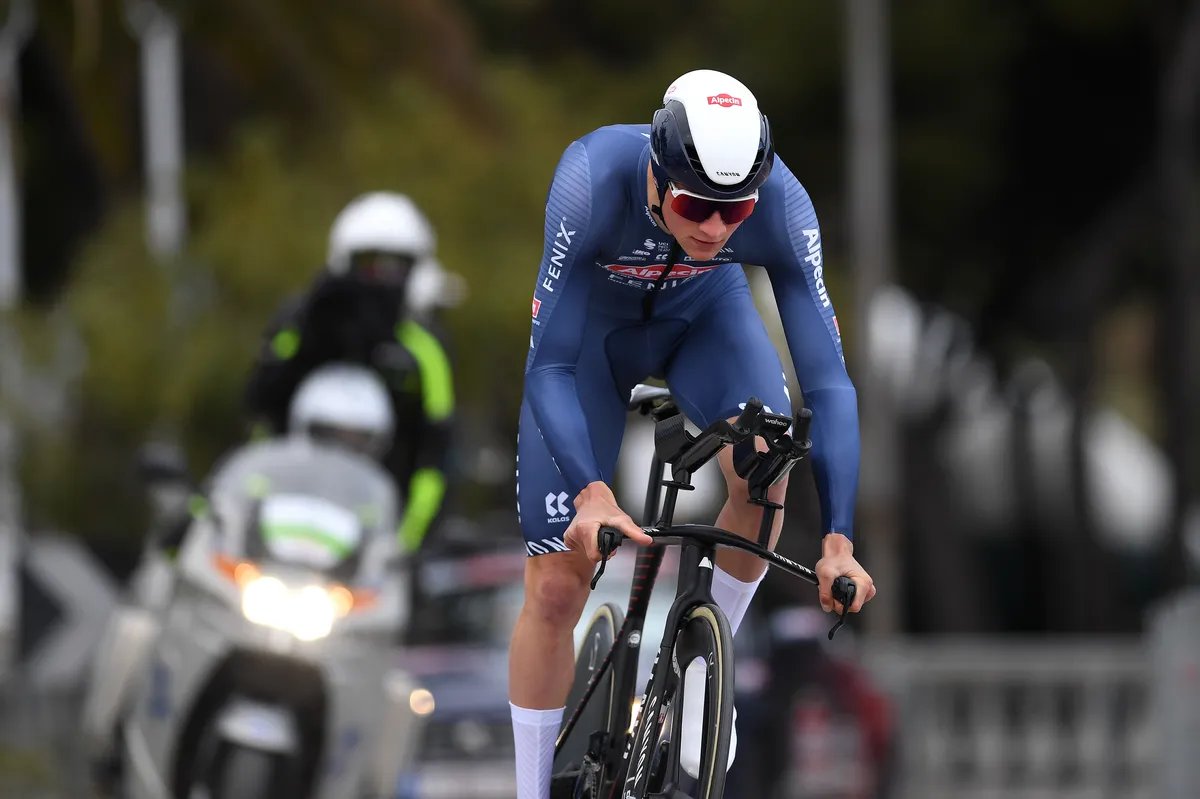
Will Van der Poel keep yellow? He is very motivated to do so, and will likely approach this time trial differently to others so far this year.
His only showings in time trials in 2021 have been the short final stage of Tirreno Adriatico and the equally short opening stage at the Tour de Suisse, but neither was a focus as he appeared to roll round without a full maximal effort.
It would have been interesting to see his form in the stage 7 mountain time trial at the Tour de Suisse (won by Rigoberto Uran with Julian Alaphilippe in second), but he abandoned the race before the start of stage six with illness.
Alaphilippe – currently at eight seconds back on GC – does have history in time trials. Most notably, he dramatically (and against all expectations) won stage 13 in the 2019 Tour during his run at the yellow jersey, placing ahead of big time trial names such as Geraint Thomas, Thomas de Gendt and Kasper Asgreen.
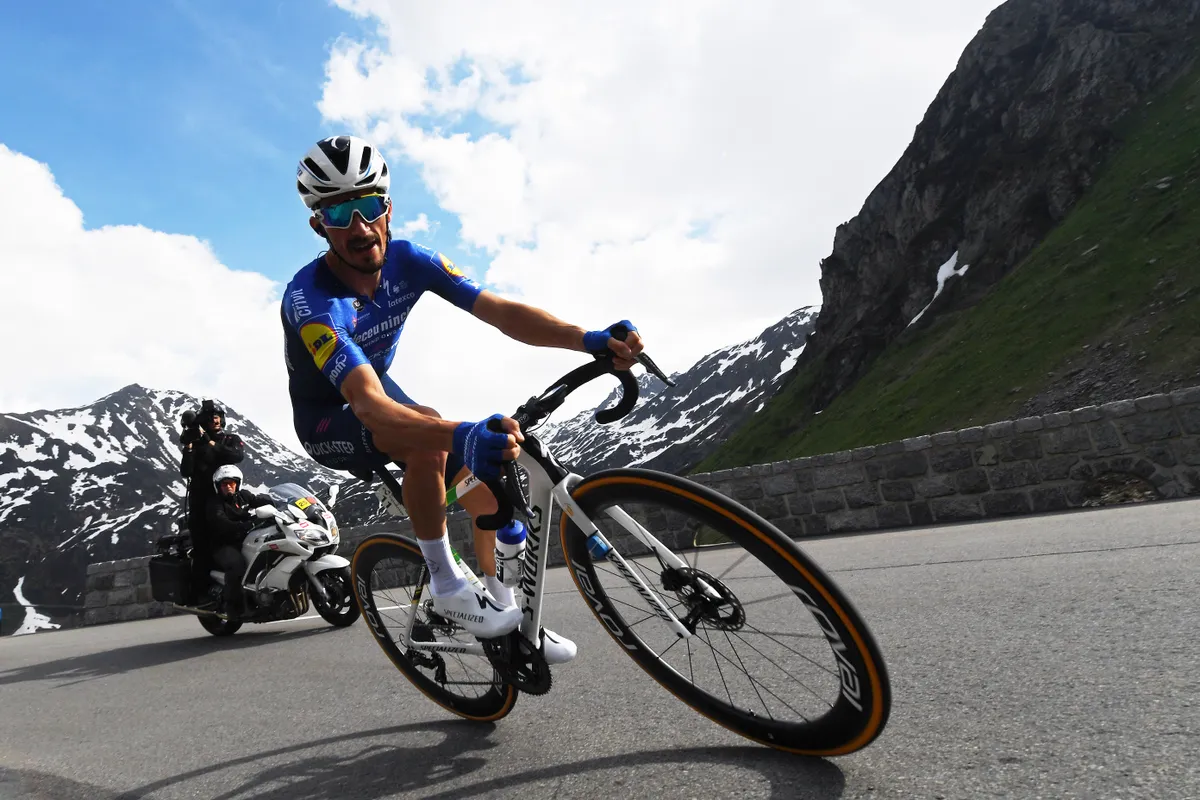
The Frenchman also recently finished second in the Tour de Suisse’s mountain time trial on a road bike, with no concessions to aerodynamics.
Aside from another top five in the Swiss stage race’s opening stage, Alaphilippe doesn’t have any other time trial performances of note to his name in 2021, equally just getting round the final stage of Tirreno Adriatico in practically the same time as Van Der Poel.
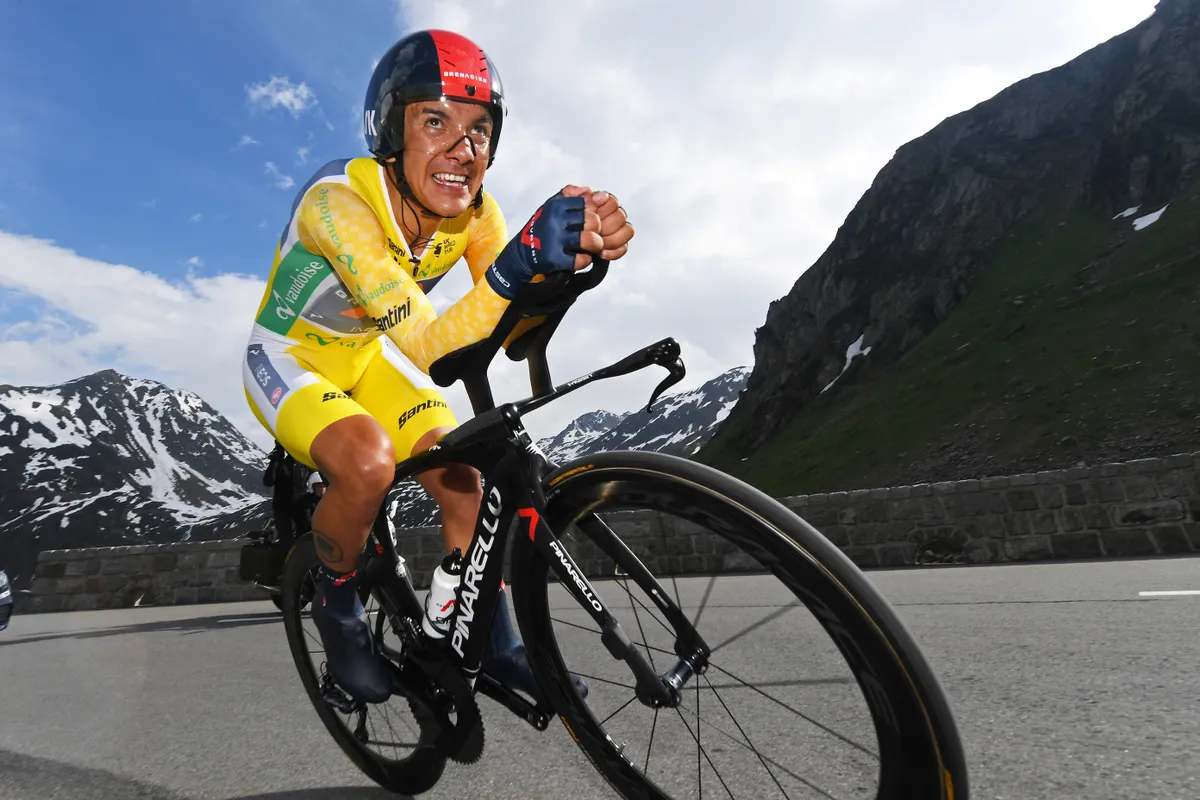
With Thomas losing time and dislocating his shoulder in the opening stages of the Tour, Carapaz can now stake a claim as Ineos Grenadiers’ primary protected rider and the Ecuadorian has made a step up in his time trial performances in the past year.
The 2019 Giro d’Italia champion placed fourth on stage seven at the Tour de Suisse, but the more interesting performance was on the short, pan-flat opening stage, where he beat established time trial specialists such as Tom Dumoulin, Maciej Bodnar and Tobias Ludvigsson.
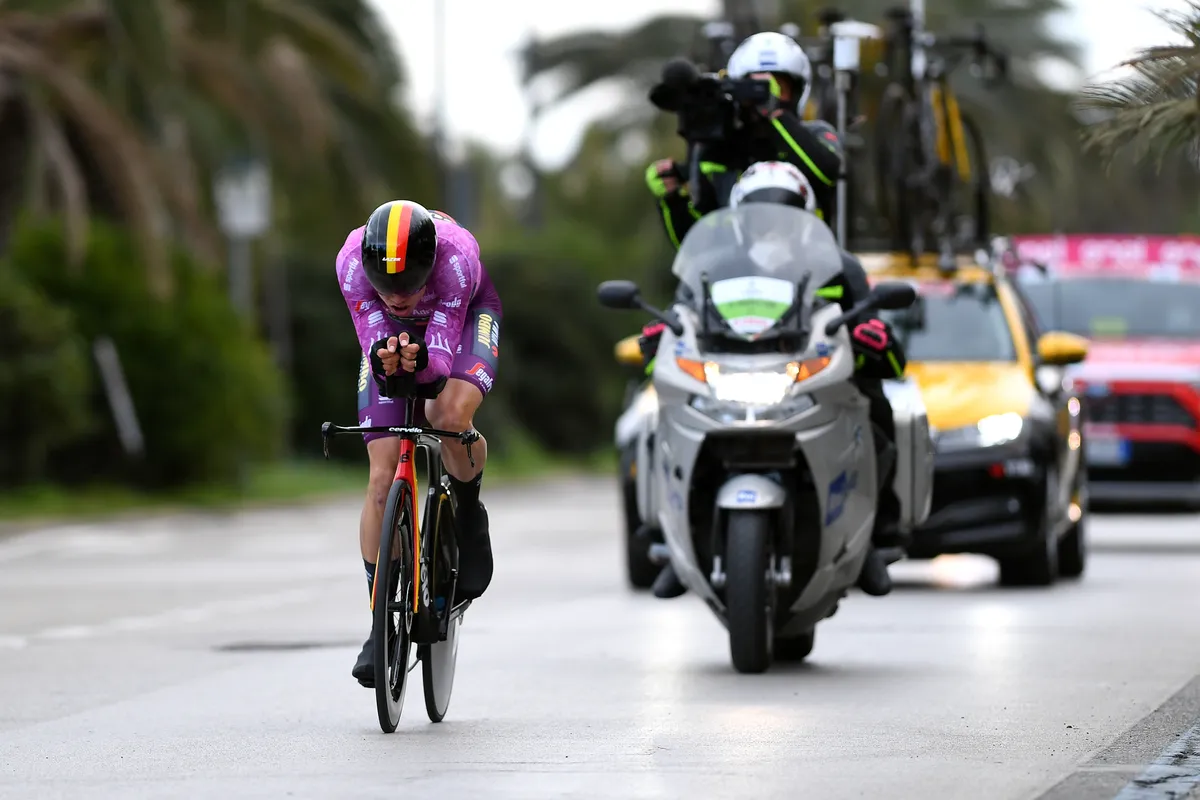
Despite all this, the standout name at the top of the current GC is Van Aert. Currently on the same time as Carapaz but with serious time trial credentials, he will surely be itching to take yellow and reverse some of the misfortune already experienced by Jumbo Visma.
Van Aert hasn’t raced as many time trials as some in the past 12 months, but with second place at last year’s World Championships to his name, and the not insignificant achievement of being the rider to break Filippo Ganna’s eight-race winning streak in the final stage of Tirreno Adriatico this year, he certainly won’t be rolling round at a submaximal effort.
The course
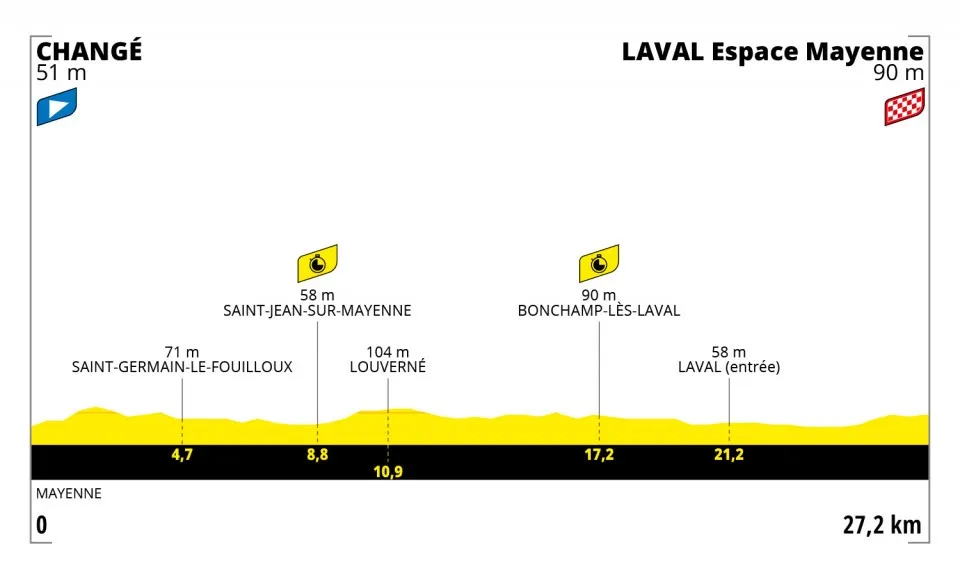
Starting just north of Laval, the 27.2km stage five time trial heads north before looping around clockwise to finish on the outskirts of the town centre.
The first test is an 800m hill after around 1km. At a less than seven per cent gradient and taking less than two minutes to complete, some riders will run the risk of going far too hard for little payback.
Saving five seconds on this climb will require an extra 30 watts – if that puts the rider into the red too much it could affect fatigue, and time losses, much later on.
There is another climb just over 1km later, though it is half the length and a little less steep than the previous ascent. The entry speed will be so high that riders will be able to maintain speed and press on without too much difficulty.
We then enter a rolling section with the first time check coming at 8.5km in Saint-Jean-Sur-Mayenne, just over the bridge crossing La Mayenne.
Here we won’t be able to tease out the difference between over-enthusiastic (but doomed) riders who’ve hit the initial part of the race too hard, versus those who have started easier but measured their effort correctly.
The second time check at Bonchamp-lès-Laval at 17km will be more revealing.
By this point, riders will have spent a long time in the aero bar on undulating terrain and at average speeds of more than 50km/h between the first and second time checks. Here the time gaps will start to appear.
The final 10km section finishes with a slight gradient but is markedly more technical than the rest of the race as the riders blast their way through Laval with tight 90-degree turns (on what may be damp roads for the later starters with a risk of thunderstorms in the area).
Not having spent enough time in the aero bar and practicing cornering will be a hindrance here, as well as tired legs from the previous ~20-minutes of effort.
How much of a difference does tech actually make in a time trial?
This time trial will be similar in feel to the final stage of this year’s Giro d’Italia, rather than the hilly time trials seen in the Tour de Suisse, Romandie and Basque Country.
Riders will be looking to minimise their aerodynamic drag as much as possible, with no concession to lightweight components or comfort.
The race will take the top riders just over 30 minutes to complete, reducing the impact of large losses in time, but we will still see gaps.
In particular, the GC riders who are historically good at time trials (such as Thomas, Tadej Pogačar and Roglic) will be able to mix it up with the more focused time trial specialists, such as Kasper Asgreen.
However, with Thomas and Roglic’s crashes in the opening stages, any small loss in power output will add up over this distance.
For example, a five per cent drop in power due to crashing/fatigue will cost one of the top riders around 40 seconds, and possibly more so if discomfort causes the rider to not hold their aero position as well as normal.
With that in mind, a five per cent penalty in terms of aerodynamic drag over the course of the race is worth 30-seconds to the top riders, or the equivalent of around 15 watts in power output.
That five per cent could come from a variety of sources – the largest being a poor aero position, but the top GC riders will have spent time working on their positions over the winter in the wind tunnel and at the velodrome to reduce their aerodynamic drag effectively.
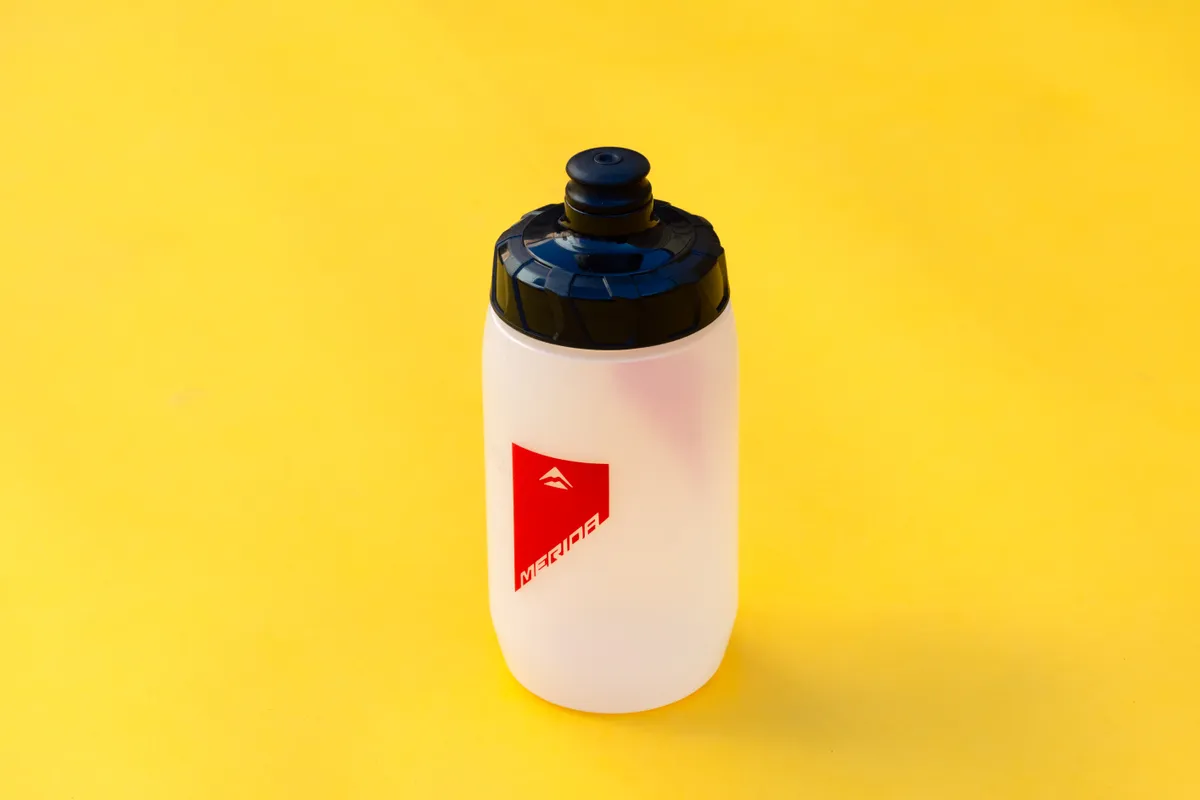
Small details still matter, though. Things like using round bottles on the frame (always a killer for aerodynamic drag but still seen constantly in top-level time trials), not selecting the most aerodynamic wheels, and having an ill-fitting skinsuit or no shoe covers will all individually increase aerodynamic drag by small percentages.
This means some riders could be standing on the start line displaying a 15 to 20-watt penalty that they will need to drag around the course with them.
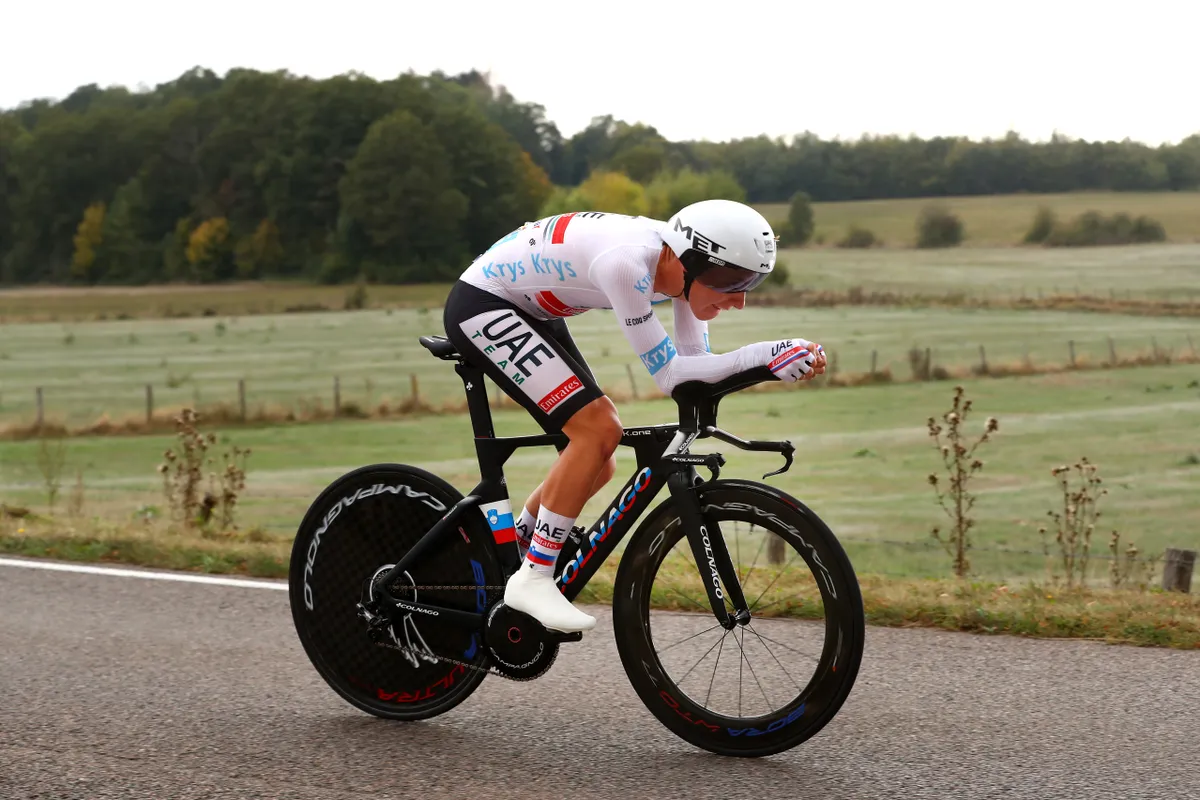
The difference between a fully optimised GC or TT specialist rider, and a non-optimised rider, in terms of their equipment can be quite large.
You will often see domestiques riding less deep wheels, standard aero bars (rather than integrated setups) and in positions designed for comfort rather than speed. All of this could easily add up to 10 per cent aerodynamic penalty compared to a fully-optimised setup.
With that said, if the rider hasn’t ridden their time trial bike much, then a very aggressive position – which could be more aerodynamic – could cause an injury.
If it does rain for some of the later riders, then tyre choice will also be critical.
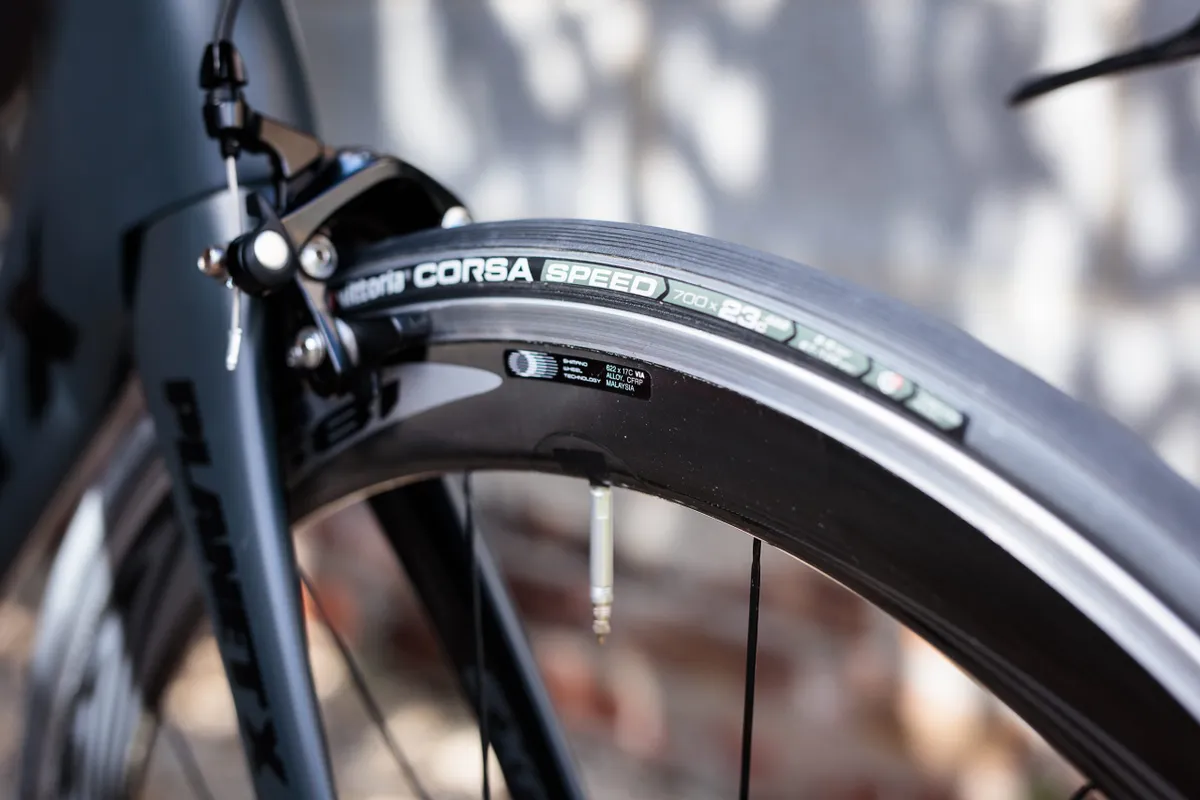
Swapping out lightweight time trial tyres (such as a Vittoria Corsa Speed or Continental Grand Prix TT) for heavier duty road racing tyres is as bad as a poor aero decision, as is overinflating a tyre.
The latter is still surprisingly common in the World tour, with some teams and mechanics (and riders) also not used to the lower pressures that can be used with modern tyre compounds and wide internal rim widths. An overinflated set of tyres will cost more than five watts, which in a race of this length will add up to a time penalty of more than 10 seconds.
So, what’s going to happen? Who will win the stage 5 time trial?
Predicting a Grand Tour time trial in the early stages of a crash-filled race isn’t as easy as, say, a World Championships, where some riders will have different goals and less interest in a maximal effort.
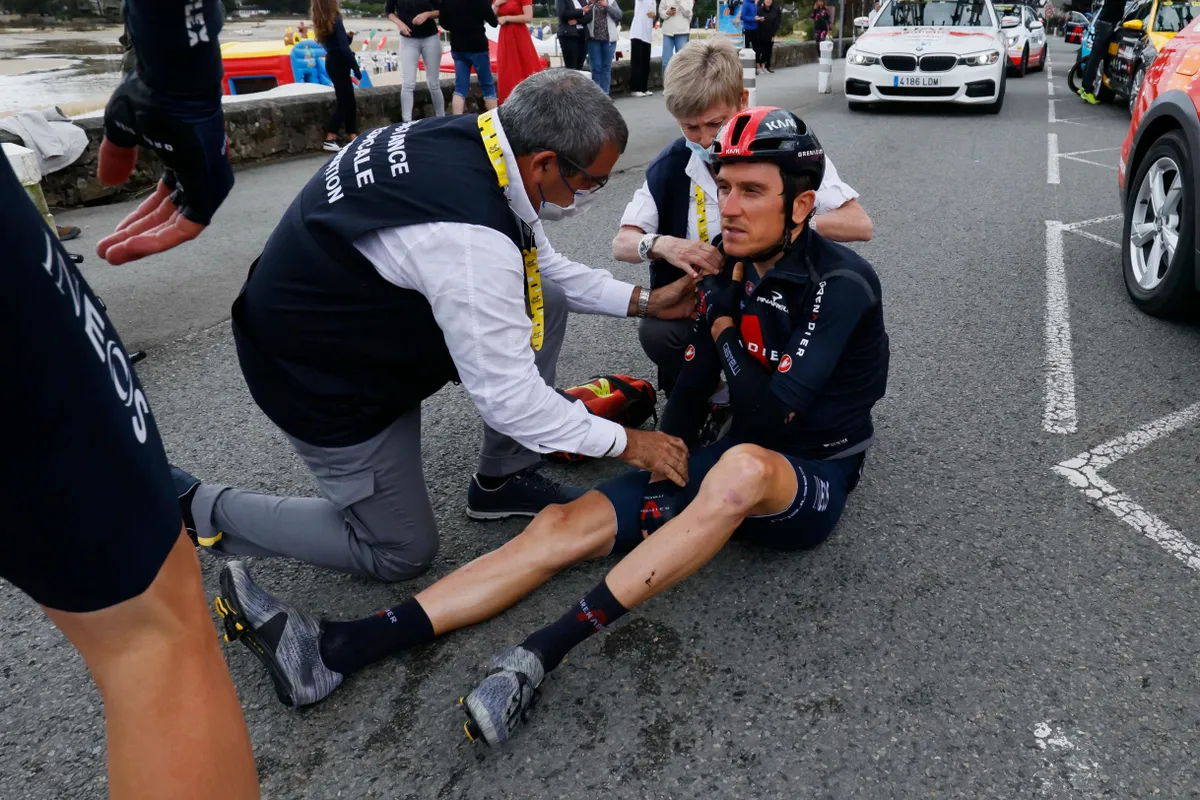
In the top 30 on GC, a lot will depend on the recovery of Thomas and Roglic. Will their injuries not only affect their power on the day, but also their ability to hold a good aero position for more than half an hour?
We would expect climb-focused riders like Enric Mas, Nairo Quintana, David Gaudu and Esteban Chaves to lose time, and Roglic and Thomas to claw back some of what they’ve lost, but it may be that they simply maintain their place on GC for the time being.
Pogačar, Alaphilippe, Pierre Latour and Rigobeto Urán should come out well from the GC riders, Vincenzo Nibali too after relatively good time trial performances in the Giro.
For the time trial specialists still in the top 30, Kasper Asgreen, Jonas Vingengaard and Søren Kragh Andersen won’t trouble the yellow jersey, but will put in good performances for the hope of a stage win.
Further down the list Mikkel Bjerg, Mattia Cattaneo, Stefan Kung, Stefan Bissegger and Max Walscheid have all performed well in the big time trials this year, and all have a good chance at a stage podium.
All eyes, however, will be on Van Aert, poised to wrestle yellow off Van der Poel – but he certainly won’t give up without a fight.
My prediction for the stage five podium?
- Wout van Aert
- Stefan Kung
- Stefan Bissegger
What do you think of Xavier’s prediction? Who’s your money on for the podium? Let us know in the comments!

